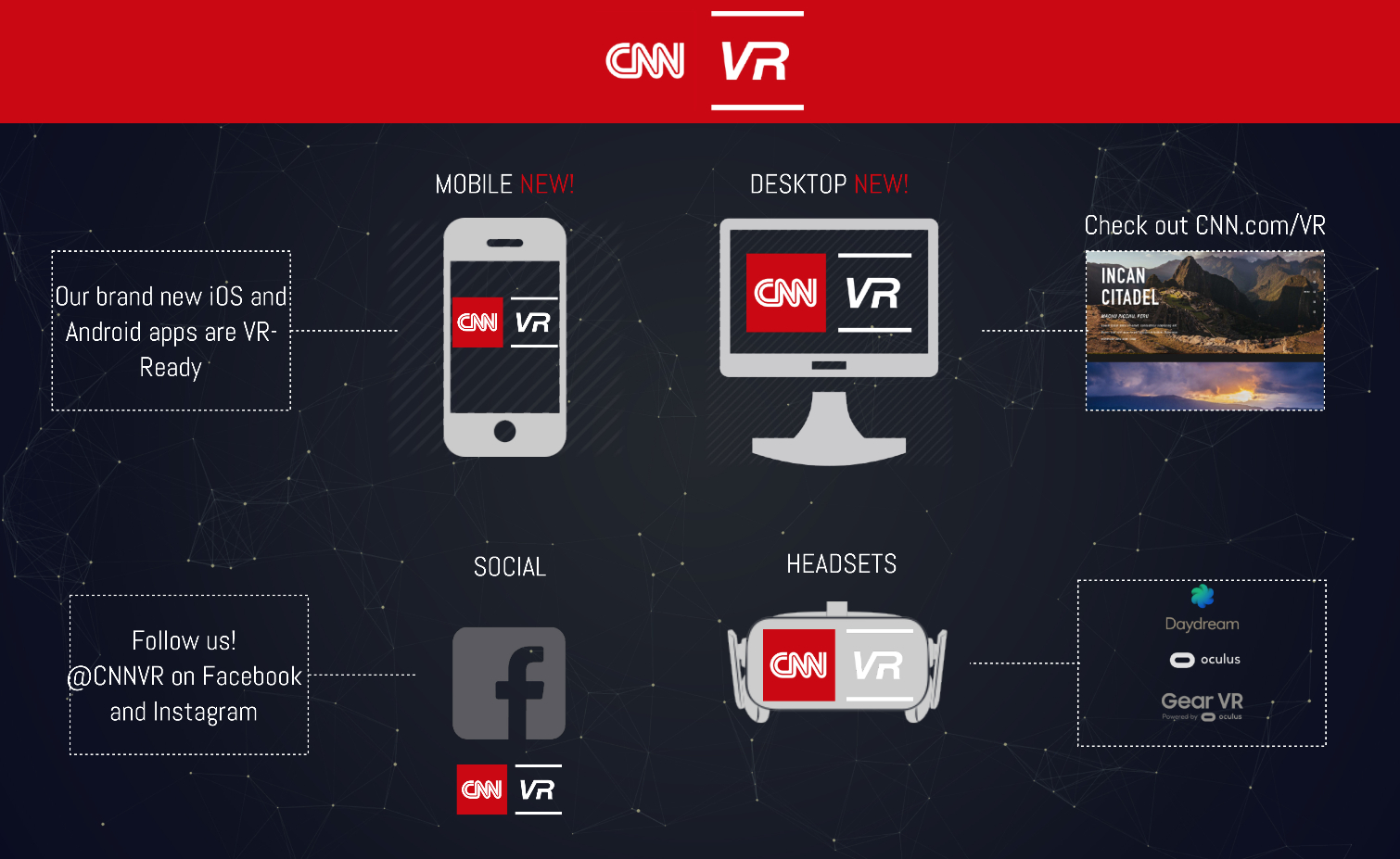CNN Helps Normalize VR With New Content Push
CNN joined the push to make VR mainstream with a new platform, appropriately dubbed CNNVR, that's devoted to VR content.
CNNVR content is available on the broadcaster's website and mobile apps as well as the Oculus Rift, Samsung Gear VR, and Google Daydream platforms. CNN said this means its mobile apps are the third-most popular source of 360-degree videos, behind YouTube and Facebook, and that it can reach more than 5 million people who own supported VR devices. That could bring a whole new audience to VR while also giving the VR faithful even more to watch.
Here's what CNN said about the new platform in its announcement:
The global team with footprints in New York, Atlanta, London, Hong Kong, San Francisco, Dubai, Johannesburg, Tokyo, and Beijing, will cover major news events in stunning 360 video, transport users to the front row of global events through VR live streams, and produce weekly virtual reality experiences – starting today with a mesmerizing journey into the running of the bulls in Pamplona, Spain.
The company also said that it's already produced more than 50 news stories with 360-degree videos over the past year. Those videos have been viewed more than 30 million times on Facebook alone; many other people likely watched the videos through the company's website or mobile apps. Now, instead of having to hunt for 360-degree video content on CNN's digital services, interested viewers will be able to visit the dedicated CNNVR platform.
CNN follows the New York Times and other media companies in supporting VR. CNN hasn't gone quite as far as the NYT, which bundled Google's Cardboard headset with its newspaper in October 2015, but the broadcaster's popularity could still help VR content reach a new audience. Combined with more support from YouTube, Facebook, Vimeo, and other popular media companies, these efforts could help VR reach a more general audience.
CNN's announcement ended with this promise: "Whenever news breaks, and wherever amazing stories unfold, CNNVR will transport our audience closer than ever before and on every device available." (That's going to be hard without HTC Vive support, but maybe the platform will expand to the HMD soon.) If the company keeps its word, VR content might very well go from being a "nice to have" to being a must-have for other broadcasters.
Get Tom's Hardware's best news and in-depth reviews, straight to your inbox.

Nathaniel Mott is a freelance news and features writer for Tom's Hardware US, covering breaking news, security, and the silliest aspects of the tech industry.
-
Jeff Fx Reply19398299 said:no vive.......
Seems shady. The same program should work for the Rift and the Vive. -
ubercake If CNN didn't publish false news, I'd almost believe they would take VR mainstream.Reply
Perhaps CNN can brand their VR as Virtual Lies (VL) rather than Virtual Reality (VR)?
My 70-year old father-in-law watches CNN all day. I'll ask him what he thinks about adding a chunk of plastic to his head for false-news watching. -
dark_lord69 "The same program should work for the Rift and the Vive."Reply
not really, I read an article that shows on the hardware level the devices are different but they are trying to change and standardize the driver and software interactions so it's easier to pick your device and pick your game not just find one that supports your vive specifically.
Personally, thanks to Robo Recall I am VERY happy with my Oculus Rift. -
scarecrow2311 The Compilation of every CNN fake news story against Trump since he became the Republican nomineeReply
http://investmentwatchblog.com/the-compilation-of-every-cnn-fake-news-story-against-trump-since-he-became-the-republican-nominee/
but, but, but....VR!!! can't wait till they go under!!
